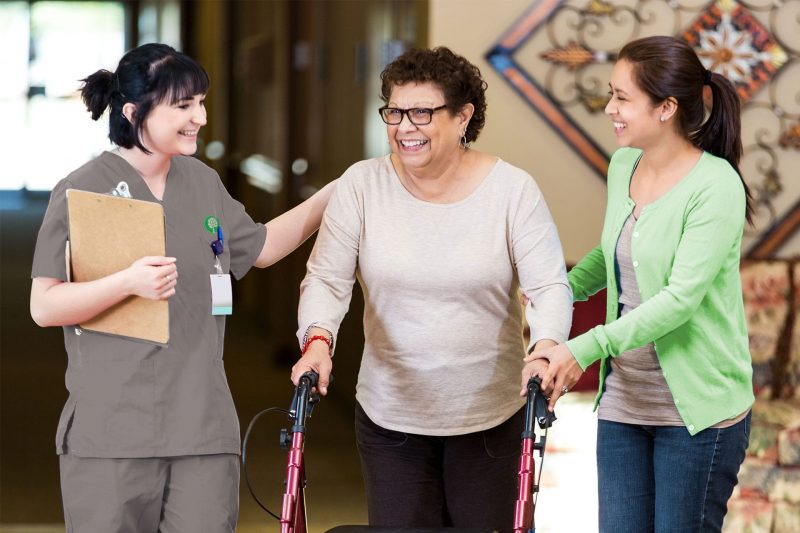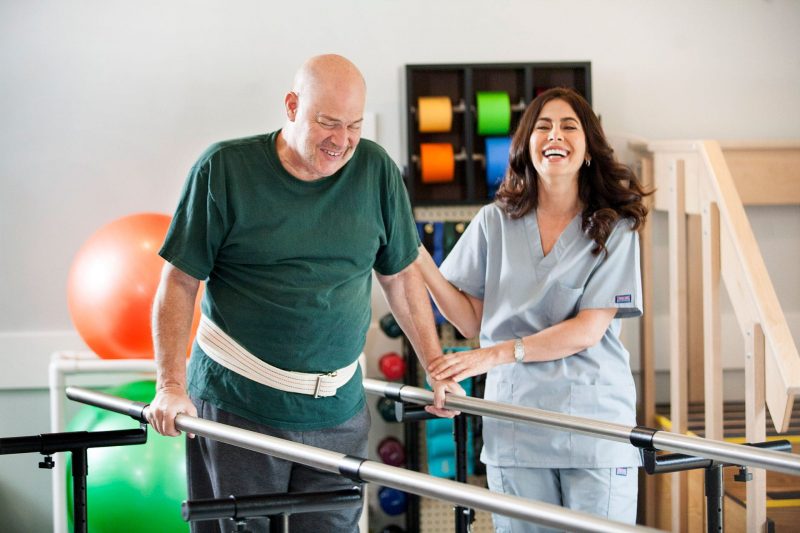After an injury or surgery, some individuals need support to reach a full and successful recovery. Physical therapy and occupational therapy help post-surgical patients or those recovering from a recent medical procedure or illness regain strength, mobility and the skills needed for activities of daily living (ADLs).
But what is the difference? Who needs physical therapy, and who needs occupational therapy? Our Arizona skilled nurses explain how they are different and what might work best for you.

Physical Therapists vs. Occupational Therapists
When researching how to get treatment for an injury or after surgery, many patients do not know what each type of therapist does. Both can help you recover from an injury, illness or impairments, but their approaches to treatment slightly differ.
Physical Therapists
Physical therapists focus mainly on recovering the movement or range of motion of a patient. This means that, with a physical therapist, you can expect to go through a lot of stretching and movement exercises.
Physical therapists can also help a patient reduce forms of pain that are treatable with movement. For example, a patient who presents moderate back pain may be given a regular back-focused stretch routine to increase blood flow in the spine and improve muscle flexibility, reducing site-specific pain. This routine could include simple body poses for the patient to perform. With regular implementation, the exercise could even reduce the need for pain medications.
Occupational Therapists
Occupational therapists may also help promote movement and range of motion as physical therapists do. However, this specific type of therapy is most concerned with helping a patient recover from a physical impairment safely and as independently as possible.
Occupational therapy is about rebuilding skills that will allow the patient to perform daily activities, including bathing, grooming, dressing and eating. The therapist will develop a treatment plan to help patients adapt to sudden mobility changes after a surgery, illness or injury.
Related: Post Hip-Replacement Rehabilitation
What to Expect with Physical Therapy
Physical therapy is performed in many locations such as clinics, offices, hospitals, nursing homes, schools, fitness centers and even a patient’s own home. A licensed physical therapist may also work in a skilled nursing facility with equipment and resources to help patients reach their recovery goals.
Some techniques used in physical therapy include:
- Stretching exercises
- Movement exercises
- Hot and cold applications
- Massages
- Electrical stimulations for muscles and nerves

What to Expect with Occupational Therapy
Most people may hear the term “occupational” and think of jobs and careers. That’s why many assume that occupational therapy is centered around helping a person adjust to their job role. However, occupational therapy is generally focused on helping a person recover from physical impairment and adapt to life-changing events after an illness, injury or surgery.
Some techniques used in occupational therapy include:
- Teaching patients how to use assistive devices, such as a walker or cane
- Working with a patient directly to re-learn tasks, such as dressing and bathing
- Teaching patients stress managing strategies
- Teaching a patient’s household members how to best help the patient when needed
- Implementing assistive devices in a patient’s home, such as shower handles and stairlifts

What Both Physical Therapy and Occupational Therapy Can Do
Both occupational therapists and physical therapists work in rehabilitative care, meaning they can both assist patients in recovery from many types of physical impairments, whether that condition is fully curable or only treatable.
Help with Treatable Conditions
For a treatable disability, both physical therapists and occupational therapists will aim to help patients recover to their best possible ability. This helps improve quality of life, even if the underlying condition cannot be fully cured. Some examples of treatable conditions by both occupational and physical therapists include:
- Chronic pain
- Neurological conditions, such as Parkinson’s Disease or Multiple Sclerosis
- Hand-related conditions, such as Carpal Tunnel
- Stroke and brain injuries
It’s important to note that some conditions may be classified as both treatable and curable, and the ultimate results of occupational or physical therapy will vary based on the patient. For example, some strokes may be only treatable to a certain point, while others can be fully recoverable and allow a patient to return to the state they were in before the stroke occurred.
Help with Curable Conditions
When a patient presents a curable condition, physical and occupational therapists will treat that patient with the goal of full recovery, giving the patient the same quality of life they had before. Some examples of these curable conditions include:
- Sport-related injuries or other movement-related injuries, such as a torn ligament
- Post-surgery recovery
- Some concussions and brain injuries
- Some forms of urinary incontinence
Again, whether or not a condition is classified as curable may vary from patient to patient, with factors such as age, the severity of impairment and form of impairment playing a role.
How to Choose Your Therapy Provider
Both physical and occupational therapists work with patients directly to improve their quality of life after an injury, surgery or disability becomes present. While physical therapists aim to improve range of movement and mobility, occupational therapists help with the quality of movement and enhance the patient’s day-to-day routine.
If you or a loved one may benefit from either physical therapy or occupational therapy after being injured or undergoing surgery, Haven Health in Arizona offers state-of-the-art equipment and licensed physical and occupational therapists who have experience helping patients reach their recovery goals. We’ll work with your healthcare professionals to build a plan that works best for you.
To learn more about our skilled nursing services at our multiple locations in Arizona, contact our team today!
